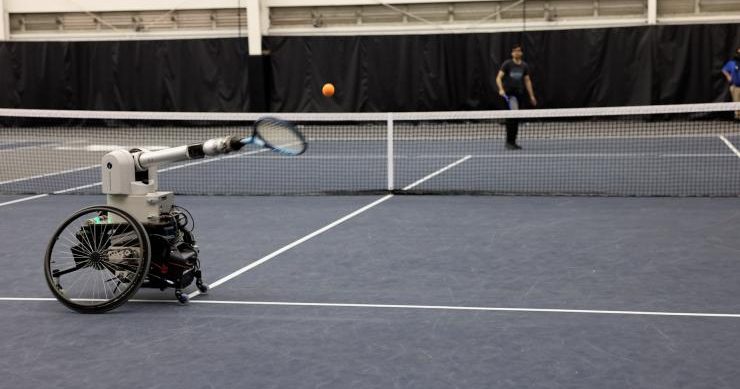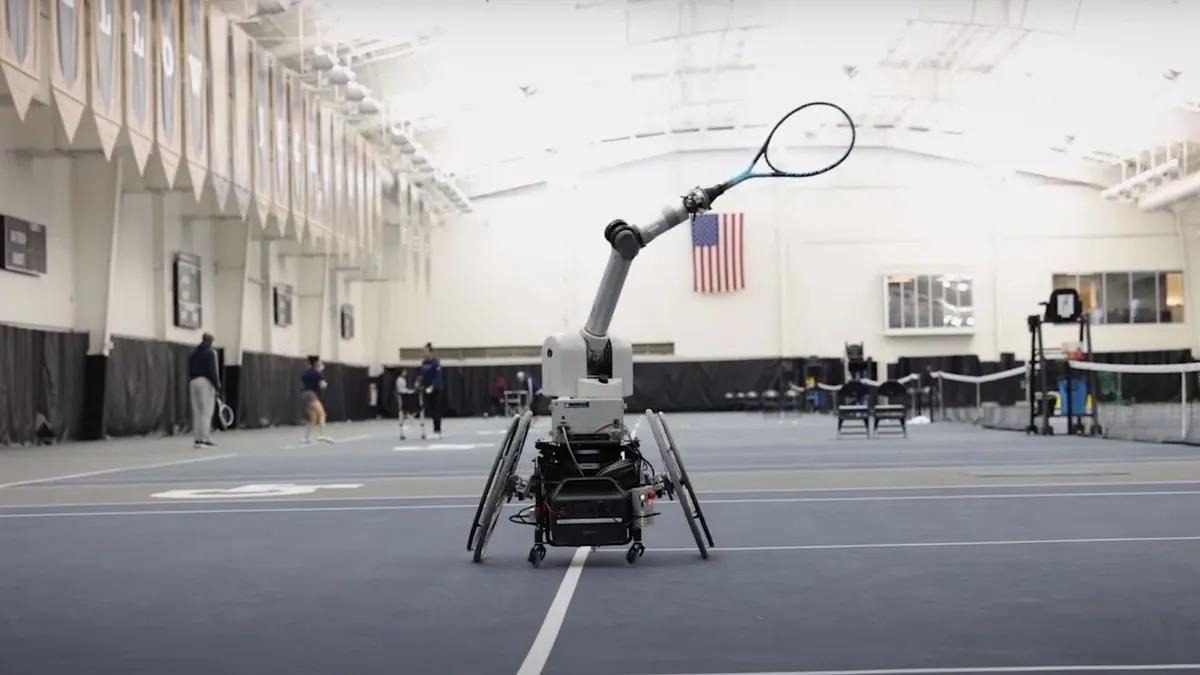Do you like tennis? Get ready to see him transformed. A professor of Interactive Computing at Georgia Tech gave life to a robotic partner who could soon become the most experienced coach and tennis sparring partner ever.
Dr. Matthew Gombolay he is not a simple engineer, he is a visionary. He dreams of a future in which human-sized robots play a crucial role in sports and athletic training. His latest technological work, ESTHER (Eexperimental Sport Tennis Wheelchair Robot) is a giant leap forward for tennis training.

A life-size video game
ESTHER isn't your average ball thrower. The robot is designed to simulate human opponents and real game conditions. Therefore it allows athletes to hone their skills and performance much more effectively. An avid tennis enthusiast, Dr. Gombolay knows well the need for a tennis robot that can adapt to various playing styles and exploit a player's weaknesses. And, based on the design of wheelchairs used in Paralympic tennis, he and his team solved the question of ESTHER's movement on the court.
ESTHER is not just a tennis robot, she is a pioneer in the field of sports AI. While tennis players like Djokovic train with human coaches, ESTHER offers a technological alternative. This tennis robot is able to learn and adapt to various playing styles, offering an unprecedented level of customization. Furthermore, thanks to its ability to simulate human opponents, ESTHER can help players prepare for specific opponents, making training more targeted and effective.
With over two years of hard work and the collaboration of more than 20 students, the Georgia Tech team was able to program ESTHER to locate an incoming tennis ball and return it consistently. And while the robot is still no match for the skills of its namesake, the famed wheelchair tennis player for whom it's named (Esther Verger), the creation of a human-sized robot capable of hitting a return shot is an extraordinary achievement.
The secrets of the robot tennis player
The secret of ESTHER is in its two motors which provide the agility and thrust necessary to cover both sides of a tennis court. The real challenge lies in the "choices" to be made: the tennis robot must anticipate the trajectory of the ball and determine the optimal path to intercept it. ESTHER's current capabilities are limited to trading shots, but Dr. Gombolay and his team have ambitious plans for the tennis robot's future development.
They envision a machine that selects shots strategically, elevates its playing abilities and increases its value as a training tool. A machine that also knows how to learn and develop new techniques thanks to artificial intelligence.
While Djokovic and other top-level tennis players train with human partners, ESTHER offers a unique alternative. This tennis robot can simulate a variety of playing styles, allowing players to practice against a wide range of opponents. Furthermore, thanks to its ability to learn and adapt, ESTHER can also help players identify and correct their weaknesses, making training more effective.
Revolution in training
The advent of "robot coaches" will radically change sports performance. Imagine kids introduced to the sport of tennis by wise teachers, but trained hard by a robot like this. Reflexes, attention, analytical skills will be multiplied countless times, and will allow tomorrow's athletes a leap forward no different from that of a current tennis player compared to a tennis player from the early 900s.
It will be possible to train against "famous" opponents: a tennis robot like ESTHER will be able to imitate their styles and shots. And one day, as happened in chess when the Deep Blue computer challenged the world champion, we will see Djokovic (or whoever for him) challenge a tennis robot until the last volley, hoping to always be able to distinguish the game of a human being from that of a car.


